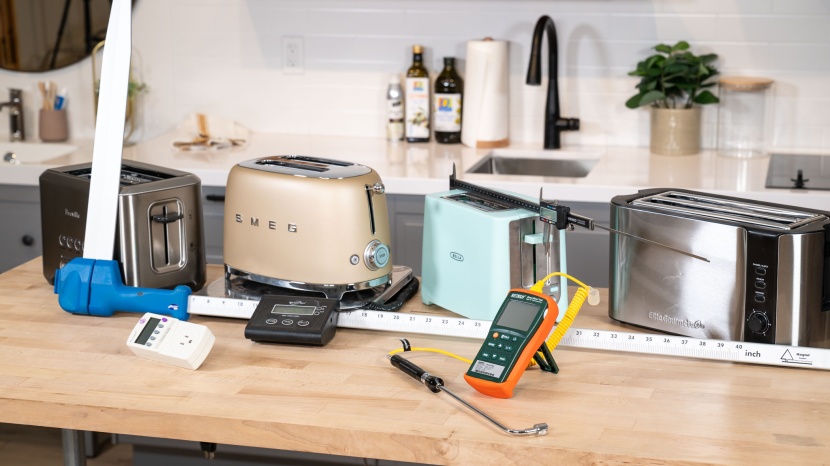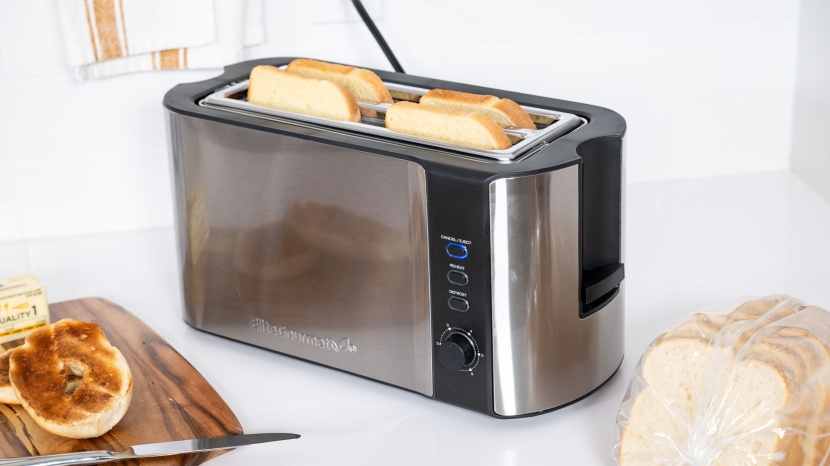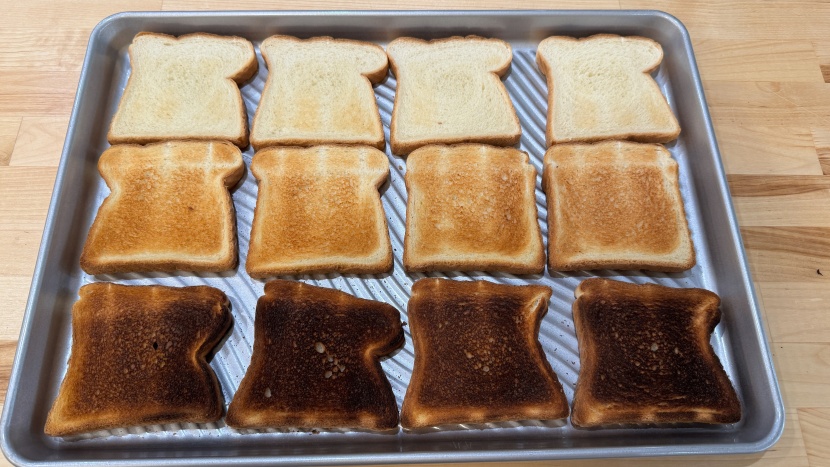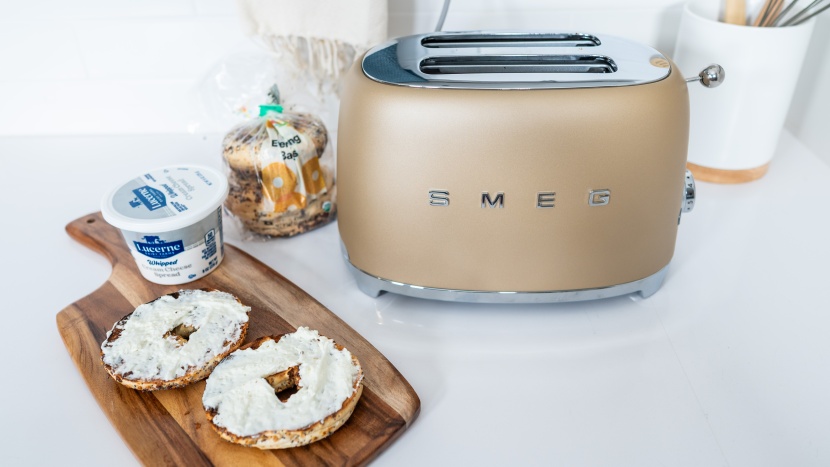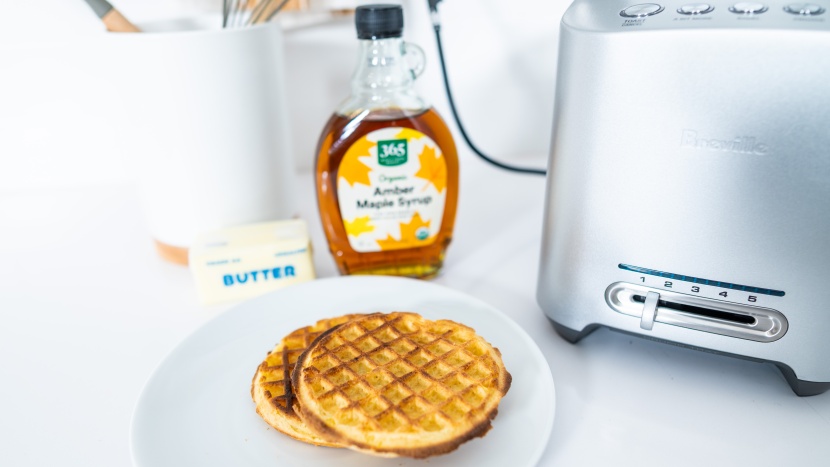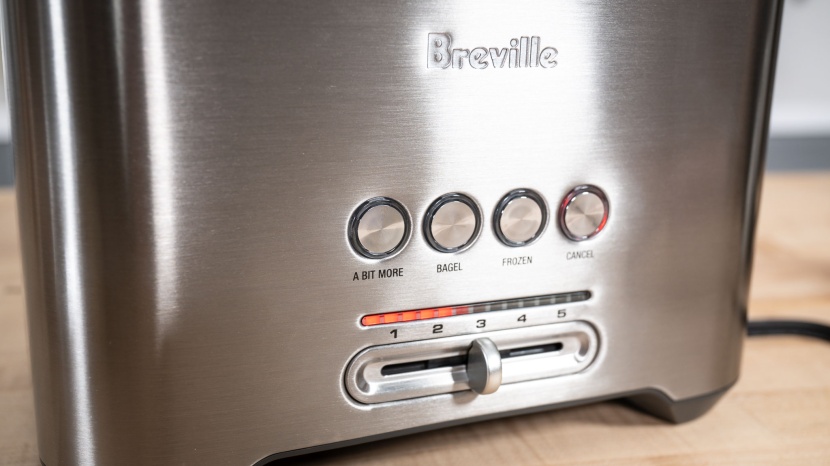Since 2016, we've burned, crisped, and golden-browned our way through more than 40 toasters, consuming enough bread to feed a small army in the process. Our latest round of testing puts toasters through 17 individual tests per model, examining everything from how evenly they brown your morning bagel to how quickly they transform frozen waffles into crispy breakfast treats. After weeks of testing and countless slices of bread, we've developed a comprehensive approach that reveals which toasters deserve a spot on your kitchen counter.
Our testing process goes far beyond simply popping in a piece of bread and waiting for the ding. We meticulously evaluate each toaster across four critical performance metrics: Bread Toasting (35% of overall score), Bagel Toasting (35%), Frozen Waffle Toasting (20%), and Ease of Use (10%). This weighted scoring system reflects what matters most to home cooks — consistent, quality results for everyday breakfast staples, with a healthy emphasis on convenience and practicality (mornings are not the time for snafus). We photographed every piece of toast, bagel, and waffle that emerged from each of the models we tested, in order to see and share the results side-by-side. This allowed us to tease out which models produce your standard run-of-the-mill toast from those that produce great toast. For the full rundown of the models we tested check out our main toaster review.
Bread Toasting
At 35% of the overall score, bread toasting performance carries significant weight in our evaluation — and for good reason. This is the fundamental purpose of having a toaster, and it's likely what you'll use yours for most often. Our bread toasting tests involve four specific scenarios that examine different aspects of performance.
We begin each test session with plain white sandwich bread, the most common type used in American households. For each toaster, we run two complete rounds of toasting at low, medium, and high heat settings. Why two rounds? Because consistency matters as much as quality. A toaster that produces perfect golden-brown toast in round one but burns it in round two isn't doing its job properly.
During these tests, we evaluate four critical factors. First, taste and texture — does the toast achieve that perfect balance of crispy exterior and tender interior that makes great toast so satisfying? We look for that delicate crunch that gives way to a slightly chewy center, avoiding both barely-warmed bread and charcoal briquettes.
Second, we assess evenness. Nothing ruins morning toast quite like discovering one corner is practically raw while another section could double as charcoal. We photograph each slice and use both visual inspection and a standardized color chart to measure browning consistency. The best toasters produce uniform results, with color variation of less than 10% across the slice's surface.
Third, we measure consistency throughout rounds. Your toaster should produce virtually identical results whether it's the first slice of the morning or the fifth. We track temperature recovery times between cycles and note any performance degradation as the toaster heats up. Some models we tested showed concerning variation, with second-round toast coming out noticeably darker than the first at identical settings due to residual heat.
Finally, we evaluate setting accuracy. When you select “medium,” you expect medium toast, not something closer to dark or light. We've found surprising variation here, with some toasters' medium settings producing what most people would consider very dark toast, while others barely achieve what we'd call light browning even on their highest settings.
Bagel Toasting
A properly toasted bagel requires a completely different approach than standard bread — the cut side needs thorough toasting while the outer crust should be gently warmed without burning.
Our bagel testing protocol focuses on medium heat settings, using the bagel function when available. We deliberately choose fresh, bakery-style everything bagels for our tests because their varied surface (seeds, salt, garlic) presents additional challenges for even heating. If a toaster can handle an everything bagel, it can handle any bagel.
We evaluate two primary factors in bagel testing. Evenness remains crucial — perhaps even more so than with regular bread. The bagel's irregular surface, with its peaks and valleys, tests a toaster's ability to distribute heat uniformly. We look for consistent browning across the cut surface, and check for cold spots in the depths of the bagel's natural indentations.
Texture assessment for bagels differs from bread evaluation. We want a crispy, almost caramelized cut surface that provides satisfying crunch, with an interior that is warmed through but still maintains some chewiness. The outer crust should be warm but not dried out or burnt. Achieving this balance requires precise heat control and appropriate element configuration, something not all toasters manage successfully.
During our testing, we discovered that toasters with dedicated bagel settings typically reduce power to the outer elements while maintaining full power to the inner elements. However, implementation varies widely. Some models barely warm the outer crust, leaving you with a lukewarm bagel back, while others still manage to burn sesame seeds despite the reduced power.
Frozen Waffle Toasting
Frozen foods require a toaster to defrost and then toast, a two-stage process that tests heating element power and precision.
We use standard frozen waffles straight from the freezer, maintaining a consistent -5°F storage temperature. For toasters with dedicated frozen settings, we use it; otherwise, we determine through preliminary testing which heat setting produces optimal results for each model. This individualized approach ensures we're evaluating each toaster at its best rather than forcing all models into the same potentially inappropriate setting.
Our evaluation focuses primarily on taste and texture. The ideal frozen waffle should emerge with a crispy exterior that provides satisfying crunch, while the interior should be fully heated and fluffy. We've found that many toasters struggle with this balance — either producing waffles with crispy exteriors but cold centers, or thoroughly heated waffles that have lost all textural contrast and turned uniformly soggy.
We pay particular attention to how evenly the waffle's grid pattern browns. The raised portions should achieve golden-brown perfection, and the recessed squares shouldn't burn. This tests a toaster's ability to accommodate foods of varying thickness, an important consideration for anyone who toasts anything beyond standard sandwich bread.
Ease of Use
Ease of use might seem like a minor consideration, but these factors significantly impact your daily satisfaction with a toaster. We evaluate three key aspects that affect the user experience from purchase to daily maintenance.
Cleaning usually comes down to crumb tray accessibility. We deliberately create messes during our testing, toasting seeded breads and flaky pastries to generate realistic crumb accumulation. We then evaluate how easily we are able to remove the crumb, whether it captures all debris effectively, and how simple it is to clean the toaster's interior. The best models feature removable crumb trays that slide out smoothly and capture virtually all debris. The worst require awkward tilting and shaking to remove crumbs, inevitably leaving some behind to burn and smoke during future use.
We evaluate thoughtful features that enhance daily use. Does the toaster have a lift mechanism for safely retrieving smaller items? Are the controls intuitive and clearly labeled? Is there a countdown timer or progress indicator? We also evaluate special features like “a bit more” buttons for quick touch-ups and keep-warm functions that maintain temperature without additional browning.
Toasting speed matters during rushed weekday mornings, and we time how long each toaster takes to produce two slices of medium toast from a cold start. The range is surprising — from under two minutes for the fastest models to nearly four minutes for the slowest. While faster isn't always better (some quick toasters sacrifice evenness for speed), excessive wait times can make a toaster frustrating to use daily.
